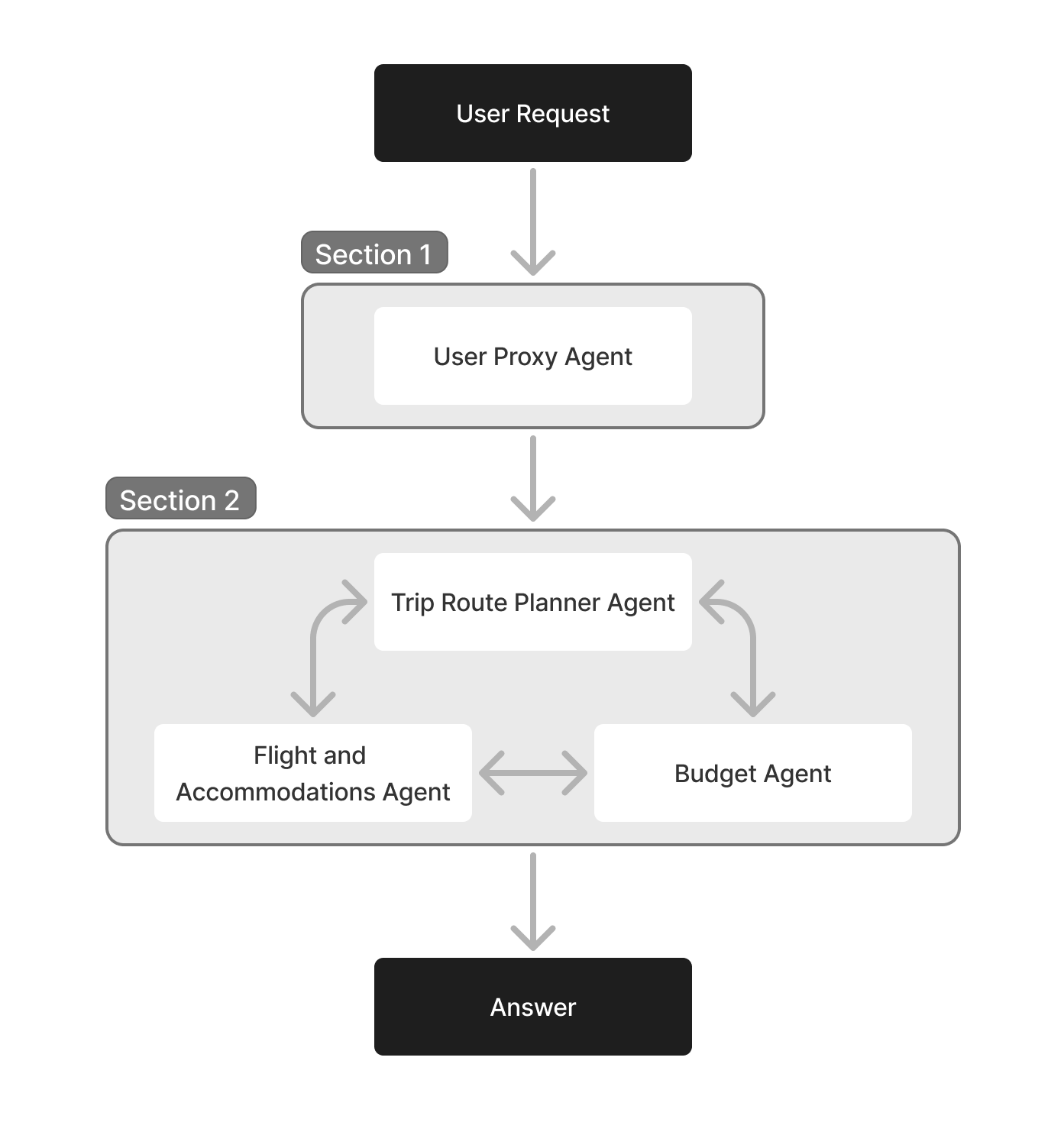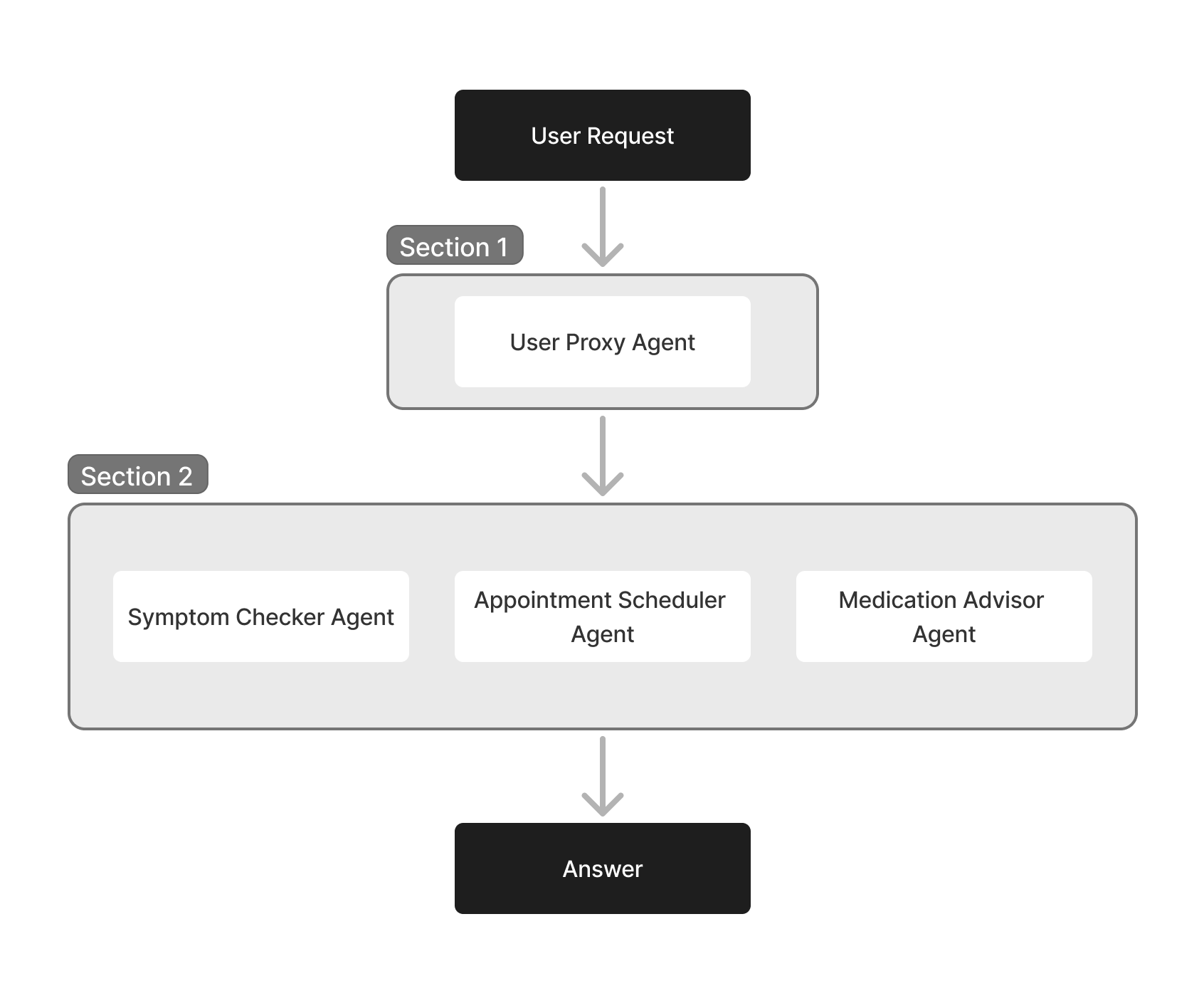Introduction To AI Agent Teams
Introduction to AI Agent Teams and The Future of Agentic Frameworks
In today's fast-paced, data-driven world, artificial intelligence has evolved from a niche tool to a cornerstone of innovation. Large Language Models have revolutionized how we interact with technology. Yet, even the most advanced LLMs have limitations. They excel at narrow tasks but struggle with complex multi-step workflows requiring specialized expertise. This is where AI agents come into play.
An AI agent is an autonomous system designed to perform specific tasks, such as analyzing data, making decisions, or interacting with users. Unlike standalone LLMs, agents combine language understanding with tools like code execution, web browsing, and API integrations, allowing them to act dynamically in real-world scenarios. But the true frontier of AI lies in agent teams.
What Is an Agent Team?
An agent team is a coordinated group of AI agents, each assigned distinct roles, that collaborate to achieve complex objectives. We can think of them as a digital workforce: just as humans leverage teamwork to divide labor and amplify strengths, agent teams combine specialized AI "colleagues" to enhance efficiency, accuracy, and scalability.
The Architecture of Agent Teams
Let's think of a scenario where you need a traveling assistant. A single agent might be underwhelming in this situation since planning the trip route, flight, accommodations, and budget all at once can lead to unreliable answers, missing the point or multiple points, and a lack of creativity. On the other hand, AI agent teams can handle this task gracefully.

In the above image, we see a schema of a traveling assistant team. In Section 1, a User Proxy Agent resides, responsible for accepting the user's request, handling the request with external data (if present), past conversations (if present), or any kind of processing procedure. This agent shares the query with sub-agents. In Section 2, we see three sub-agents: the Trip Route Planner Agent, Budget Agent, and Flight and Accommodations Agent. As their names suggest, these agents are responsible for planning the travel route, how the user will get there, where the user will stay, and planning a budget respectively. As you can see, these agents are connected. This means they can communicate with each other and shape each other's decisions to make the final answer reliable and accurate. Of course, they might not want to join a discussion where their part isn't necessary. The logic here is up to them if not specified explicitly.
Agent teams can also be used to package a project even if sub-agents have completely different tasks and do not need to communicate with each other at all but serve in the same area. Let's think of a scenario where an assistant is needed to be used in healthcare.

In the above image, we see a schema of a healthcare assistant team. In Section 1, a User Proxy Agent resides, responsible for accepting the user's request and handling it with external data (if present), past conversations (if present), or any kind of processing procedure. The difference between this User Proxy Agent and the one in the previous example is that it also decides which sub-agent is responsible for the given task and invokes it directly. In Section 2, we see three sub-agents: the Symptom Checker Agent, the Appointment Scheduler Agent, and the Medication Advisor Agent. As their names suggest, these agents are responsible for checking symptoms to help doctors, scheduling appointments with patients, and advising medications to help doctors. As you can see, the agents here are not connected to each other, meaning only the agent selected by the User Proxy Agent will work on a given task to provide the final answer. This structure helps divide irrelevant tasks within the same area.
These two examples are not the only use cases for an agent team. They can be tailored to any given task in any field of work, accommodating any kind of development or system you can imagine.
Conclusion: A New Era of Agentic Frameworks
The rise of AI agent teams marks a significant shift in how we approach automation, decision-making, and problem-solving. While standalone LLMs have brought remarkable advancements, their limitations become apparent when faced with complex, multi-step workflows. Agentic frameworks address these challenges by enabling AI agents to collaborate, specialize, and dynamically adapt to tasks just as human teams do.
Whether working together through seamless communication or handling distinct tasks independently, these AI-driven teams introduce new levels of efficiency, reliability, and scalability. As AI continues to evolve, agent-based architectures will play a central role in shaping the next generation of intelligent systems, unlocking possibilities that extend far beyond what a single model can achieve alone. The future of AI isn't just about smarter models. It's about smarter teamwork.
Berke Pağnıklı - AI Engineer at Mamentis
